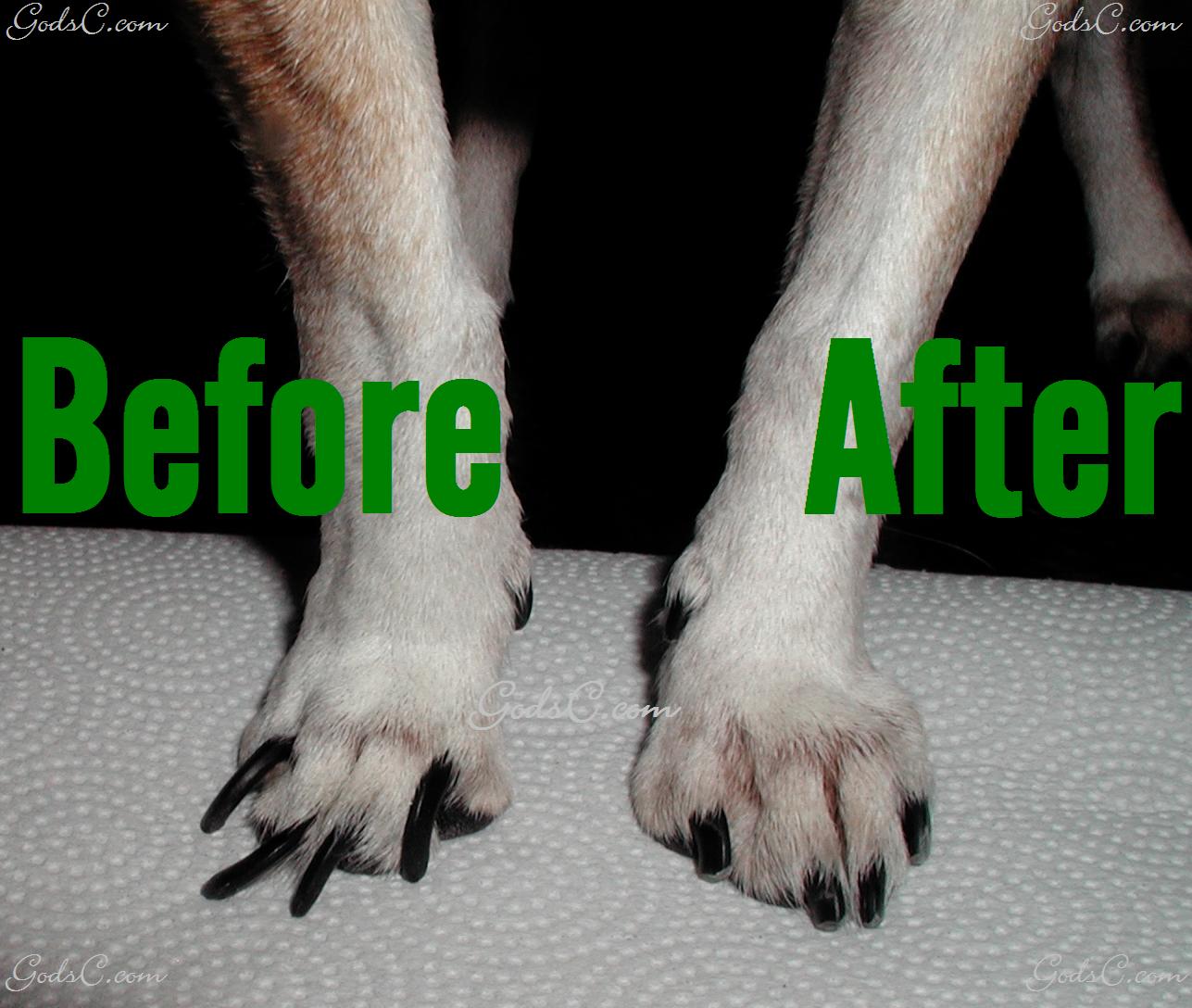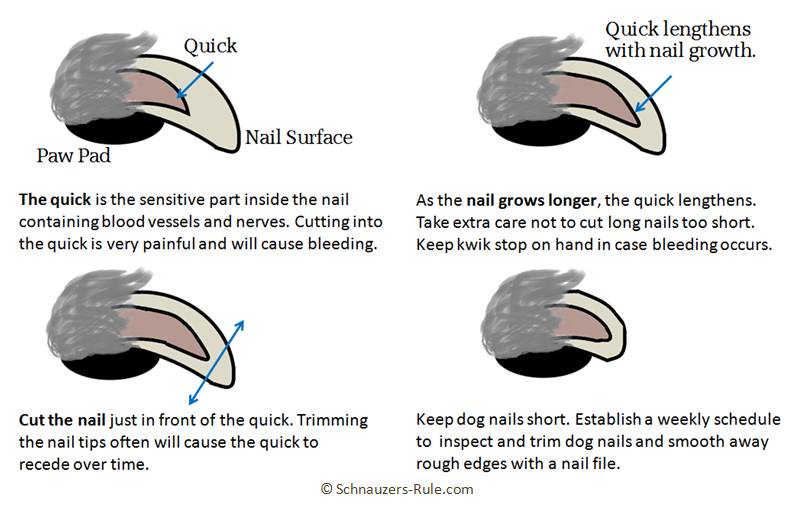Nail trimming. Even though it is not what people think of a medical condition, it’s often an appointment we will see multiple times a day on our schedule.

Why don’t more clients trim their dog’s nails at home?
Many dogs despise nail trims, and this is probably the number one reason people cite as to why they bring them in to the clinic or the groomer for nail trims. There are definitely ways to condition your dog to accept this into their grooming routine. The first, and best way to get dogs to accept nail trims is to start desensitizing them to having their feet touched, and their nails clipped, when they are puppies. Yes, they are squirmy, and wiggly, and small; but this is when they are most willing to learn and accept this as not a scary process. In more mature dogs, this can be done with training and positive reinforcement, even if your pet is no longer young and impressionable. We often recommend trimming just a few toes at a time, and then offering rewards/treats for good behavior if the experience went well, and then trying for more nails a few days later. If you keep up this routine, everything does tend to stay trim and short.
Another reason people don’t do their dog’s nail trims at home is because of the risk of bleeding. They have experienced one bad episode of a bleeding toe nail, and they are just too nervous to attempt a home nail trim again. The nail is basically a hardened layer of keratin around an inner pulpy nail core, and inside all of that is a small blood vessel that runs done the length of the nail, called the quick. There are definitely ways to avoid the quick, and the resulting bleeding, but it is important to remember that accidently cutting the quick leads to minor discomfort and not tragedy. The “quick stop” powder that your groomer or veterinary clinic uses can be obtained where most grooming supplies are sold, and is a quick and effective way to control any bleeding mistakes. Ways to avoid the quick include only cutting the “hooked” part of a dark nail, or looking for where the pink color stops and the clear part starts of a clear/white nail. If the vessel is growing through a long length of the nail, frequent clipping of the nails in small increments can eventually move that vessel back so you can get the nails shorter.
If these tips and tricks don’t entice you to take on your pet’s routine pedicure treatments, routine walks on the sidewalk or any rough terrain can wear down those nails without constant need for nail trimming. (However, be sure to avoid hot concrete during the summer time, as this can cause foot burns.) Dremmeling (or grinding) the nails works in the same way, and often pets tolerate this type of trimming much better than the cutting action of nail clippers.
Why do your dog’s nails need to be trimmed?

 Long, untrimmed toe nails actually can become a medical condition. Long nails can catch on things and rip or break, causing exposure to that inner nail bed, predisposing your dog to infections and significant pain. Smaller dogs that don’t walk often on harder surfaces, or are carried often, can even have nails that grow around into the bottom of their feet (paw pads) causing pain, open sores, and infection. Dew claws (or side claws) can do this as well and are a big concern. Nails that are too long can make walking difficult, because they don’t allow the feet and toes to properly hit the ground with the right positioning, and can often make it difficult to gain traction for older, arthritic pets.
Long, untrimmed toe nails actually can become a medical condition. Long nails can catch on things and rip or break, causing exposure to that inner nail bed, predisposing your dog to infections and significant pain. Smaller dogs that don’t walk often on harder surfaces, or are carried often, can even have nails that grow around into the bottom of their feet (paw pads) causing pain, open sores, and infection. Dew claws (or side claws) can do this as well and are a big concern. Nails that are too long can make walking difficult, because they don’t allow the feet and toes to properly hit the ground with the right positioning, and can often make it difficult to gain traction for older, arthritic pets.How often do my dog’s nails need to be trimmed?
The timing and frequency of nail trimming is certainly variable between dogs, but on average, every 4-6 weeks or so is a good starting point. Some dogs that have previously grown out their toe nails may need trimming every 2 weeks to try to move back that quick vessel and try to get them as short as needed. Some dogs walk enough on sidewalks that they may only need a trimming every couple of months, or may never need a trimming depending on how much rough surface they walk on.


No comments:
Post a Comment